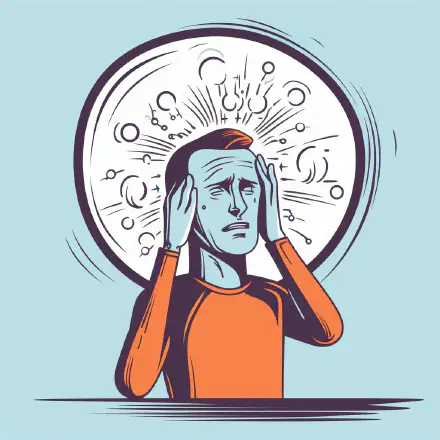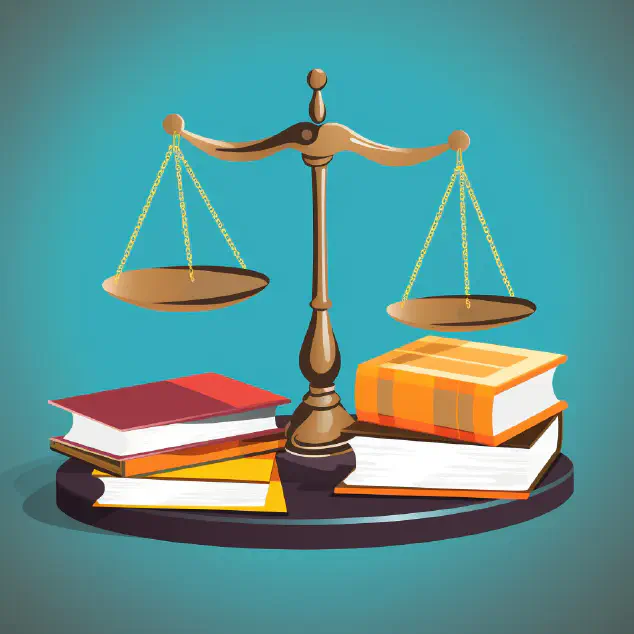
Introduction
In today’s digital age, we are inundated with information from all sides, making it increasingly difficult to distinguish between truth and falsehoods. The ability to effectively evaluate information has never been more important. Making informed decisions depends heavily on our ability to identify credible and reliable sources of information. In this article, we will explore practical tips and techniques to help you become a more effective information evaluator and avoid being misled by misinformation or disinformation.
Throughout this article, we will cover several essential tips and strategies, including:
- Considering the source of the information
- Identifying and checking for biases
- Looking for evidence to support the information
- Verifying information from multiple sources
- Fact-checking information
By following these guidelines, you can improve your ability to evaluate information effectively, enabling you to make better decisions and avoid being misled. So, let’s dive into the first tip: considering the source.
Tip 1: Consider the source
When evaluating information, it’s important to consider the source of the information. The credibility and expertise of the source can greatly impact the accuracy and reliability of the information presented. Here are some strategies for determining the credibility and expertise of a source:
-
Check the author’s credentials: Look for information about the author’s education, experience, and expertise. This can help you determine if they have the necessary qualifications to discuss the topic at hand.
-
Consider the publisher: Who published the information? Is the publisher reputable and well-known? Is the publisher known for publishing accurate and reliable information?
-
Look for bias: Does the source have a particular agenda or bias? Are they trying to sway your opinion or present information in a particular way? Be wary of sources that have a clear bias.
-
Take note of the audience: Who is the intended audience for the information? Is it written for a general audience, or is it geared towards a particular group? Understanding the intended audience can help you determine if the information is relevant to your needs.
-
Check for accuracy: Has the source been fact-checked? Are there any errors or inaccuracies in the information presented? Double-check any facts or statistics presented in the information.
By taking the time to consider the source of the information, you can better evaluate its credibility and accuracy. Remember, not all sources are created equal, and it’s up to you to determine which sources are trustworthy and reliable.
Tip 2: Check for bias
Bias can occur when individuals or organizations have a particular agenda or ideology, and this can affect the information they present. It is important to recognize bias in information, as it can result in inaccurate or misleading content. Here are some strategies to detect bias:
- Recognize the author’s perspective: Be aware of the author’s background, beliefs, and affiliations. This can give you a better understanding of their perspective and potential biases.
- Consider the language used: Be vigilant about language that might be used to sway opinion. Language that is overly emotional or contains subjective terms like “good” or “bad” can be indicators of bias.
- Look for possible omissions: Be wary of information that has been left out. Omissions can occur when the author has selectively included or excluded information to promote a particular viewpoint.
- Research the funding source: Investigate the funding source for the information being presented. Funding from organizations with specific interests may indicate bias in the information presented.
- Be aware of confirmation bias: Confirmation bias is the tendency to believe information that confirms one’s existing beliefs. Be aware of your own confirmation bias and try to approach information with an open mind.
Overall, being aware of potential bias in information is crucial for effective information evaluation. By consistently checking for bias, you can make informed decisions and avoid being misled by inaccurate information.
“A knowledge of the existence of something we cannot penetrate, our perceptions of the profoundest reason and the most radiant beauty, which only in their most primitive forms are accessible to our minds: it is this knowledge and this emotion that constitute true religiosity. In this sense, and only this sense, I am a deeply religious man.” - Albert Einstein
Tip 3: Look for evidence
When evaluating information, it’s important to examine the evidence provided to support any claims or arguments. Evidence can come in many forms, from statistics to personal anecdotes. Here are some techniques for assessing the quality and relevance of evidence:
-
Consider the source of the evidence. Just as it’s important to consider the overall credibility of the source of information, it’s important to do the same for the source of the evidence itself. Is the author or organization providing the evidence reputable and trustworthy? Are they qualified to speak on the topic?
-
Look for peer-reviewed studies or research articles. Peer-reviewed studies undergo rigorous evaluation and testing by other experts in the field, making them a highly reliable source of evidence.
-
Check for bias in the evidence. Like information sources, evidence can be biased as well. Look for any potential conflicts of interest or preconceived notions that may have influenced the evidence provided.
-
Evaluate the quality of the evidence. Not all evidence is created equal. Assess the methodology used to collect the evidence. Is it based on a large enough sample size to be statistically significant? Was the research conducted in a scientifically sound and rigorous manner?
-
Consider the relevance of the evidence to the claim being made. Is the evidence provided directly related to the claim or argument being made? If it’s tangentially related or doesn’t provide direct support, it may not be strong evidence.
By taking the time to carefully evaluate the evidence provided, you can ensure that the information you’re relying on is well-supported and accurate.
Tip 4: Verify with multiple sources
When it comes to evaluating information, it’s essential to seek out multiple sources. No single source is perfect or completely unbiased, so it’s important to compare the information from several sources to ensure accuracy and gain a more comprehensive understanding.
Importance of multiple sources
By verifying information with multiple sources, you can:
- Confirm the validity of information;
- Identify discrepancies and inconsistencies in information across different sources;
- Gain a more comprehensive understanding of a topic or issue.
Moreover, relying on one source increases the chances of confirmation bias, where you tend to search for and interpret information to support your beliefs or opinions.
Tips for finding and comparing sources
Here are some tips to help you find and compare information from different sources:
1. Use different types of sources
Use a variety of sources such as news articles, research studies, government reports, and books to gain a broader perspective on a topic.
2. Check the diversity of sources
Try to look for sources with diverse perspectives, political affiliations, and geographical locations to ensure a balanced view of the issue.
3. Evaluate the reliability of sources
Assess the credibility of each source you use. Determine the author’s qualifications, the source’s reputation, and the publication date.
4. Compare the information provided
Compare the information across different sources to identify commonalities, discrepancies, and biases. Use a table or chart to compare different aspects of the information.
5. Be aware of confirmation bias
Be mindful of your confirmation bias and try to remain objective while examining the information.
Conclusion
In summary, verifying information with multiple sources is an essential step in the evaluation process. By using different sources and comparing the information provided, you can ensure accuracy, verify facts and gain a broader understanding of an issue.
Tip 5: Fact check
When it comes to evaluating information, fact-checking is an essential step to ensure accuracy and reliability. Fact-checking involves verifying the claims, statements, and data presented in the information to ensure they are true and supported by evidence.
What is fact-checking?
Fact-checking is the process of verifying information to confirm its accuracy and credibility. It involves checking the sources, evidence, and data used to support claims and statements in the information. Fact-checking can be done by individuals or organizations that specialize in evaluating the accuracy of information.
Why is fact-checking important?
Fact-checking is important because it helps to correct inaccurate information and prevent the spread of false information. Inaccurate information can have serious consequences, such as negatively impacting public health, safety, or political decisions. By fact-checking information, individuals can avoid being misled and make informed decisions based on accurate and reliable information.
Strategies for finding reliable fact-checking sources
When fact-checking information, it’s important to use reliable sources. Here are some strategies for finding reliable fact-checking sources:
- Use fact-checking websites: There are many websites that specialize in fact-checking. Examples include FactCheck.org, PolitiFact, and Snopes. These websites provide accurate and unbiased evaluations of information.
- Check news organizations: Many news organizations have fact-checking departments that evaluate the accuracy of information presented in news stories. Examples include BBC Reality Check and NPR’s Fact-Checking Team.
- Use academic and research institutions: Academic and research institutions often conduct studies and research that can provide evidence and support for claims and statements presented in information.
- Check with experts: Experts in relevant fields can provide insight and expertise on the accuracy and credibility of information. Examples of experts include professors, researchers, and professionals in relevant industries.
By fact-checking information using reliable sources, individuals can ensure they are using accurate and trustworthy information in their decision-making processes.
Conclusion
In today’s digital age, it’s more important than ever to be able to effectively evaluate information. By following the tips and techniques discussed in this article, you will be better equipped to assess the credibility and reliability of the information you encounter.
Remember to always consider the source of the information, check for bias, look for evidence, verify with multiple sources, and fact-check whenever possible. By implementing these practices, you can avoid being misled or misinformed by false or biased information.
We hope that this article has been helpful to you in improving your information evaluation skills. Take what you’ve learned and apply it to your daily life, both online and off. With a little practice, you’ll be able to separate fact from fiction and make more informed decisions based on reliable information.


